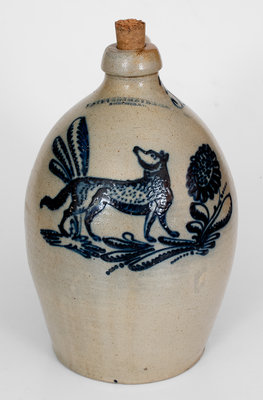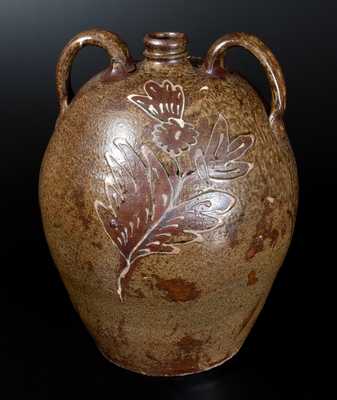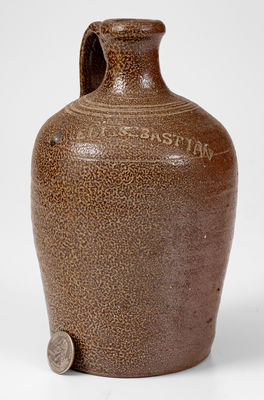Exceedingly Rare and Important Salt-Glazed Stoneware Jug with Dipped Iron-Oxide Decoration, Stamped "EDWARD WEBSTER," Fayetteville, NC, circa 1824-38, ovoid jug heavily-tooled spout, the surface covered in a dipped, purplish-brown iron-oxide solution with overlying salt glaze. Impressed at shoulder with the maker's mark of Hartford, CT-trained potter, Edward Webster. Webster, who likely learned the craft from his uncle, McCloud Webster, and cousin, Horace Goodwin, of the well-known Connecticut firm, Goodwin & Webster, was persuaded by businessman, Gurdon Robins, to establish a pottery in Fayetteville, North Carolina. After working at Robins's Fayetteville pottery from its inception around 1818 until its closure in 1823, Webster established his own pottery along Chicken Road, roughly 1400 feet west of the Gurdon Robins kiln site (Scarborough, pg. 17-18). Less than ten stoneware pieces bearing an Edward Webster maker's mark have been documented, making this work not only one of the earliest, but one of the rarest, signed examples of North Carolina stoneware known. This example features excellent size and condition, a colorful slip coating, and a form based in the Northeastern tradition. A related jug by Webster, bearing the mark, "Gurdon Robins / Fayetteville," sold in Crocker Farm's Nov. 3, 2018 auction, lot 5. Literature: Illustrated in Scarborough and Scarborough, North Carolina Decorated Stoneware, The Webster School of Folk Potters, pg. 51, fig. 47, and in color on pg. 54, fig. 53. Excellent condition with two minor base chips. H 10".



















